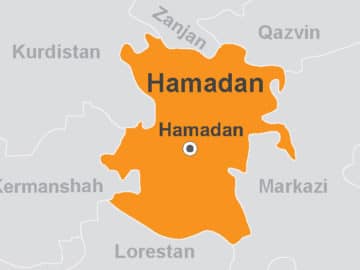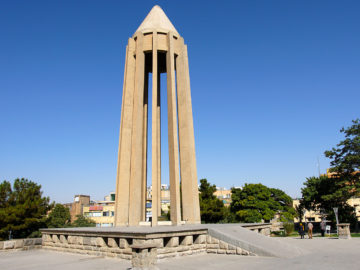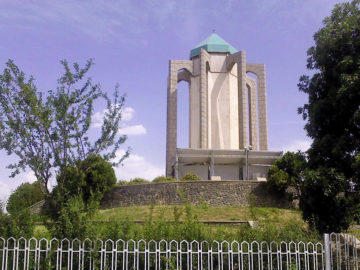Hamedan is located in the Western mountainous area of Iran, and is the center of a province with the same name. The city is situated in the mountain hills of Alvand, and was titled the Historical Capital of Iran. It was also the capital of the first Persian Empire, the Medes. In the historic texts, the name used for the city is Amedaneh which means “the place where Median live”. It was later called Hegmataneh which means “the place of Gathering”, and Ecbatana which is its Greek translation.
The City of Amedaneh was located at the heart of Medes Empire where the main roads connecting the country reached each other. Deioces, the first Median King, ordered the construction of strong fortification known as Seven Fort and many palaces. When they were dethroned by the Cyrus the Great, the city lost its centrality, but remained as one of the three important cities of Achaemenid Empire. The Ganj Nameh inscription, the remnant of Achaemenid columns, and the many golden rhyton and grails are a proof of the city’s importance in Achaemenid Empire.
Hamedan was the Capital of Parthian kings as well. In this time, two Statues of Lions stood on either sides of the city’s gate. Hamedan was among the last cities that remained loyal to Parthian Empire, until they were defeated by the Sassanid Troops. In the Sassanid time, Hamedan was one of the minting centers of the Empire. However, not long after the Nahavand Battle, Hamedan fell to the hands of Muslims. From this time, Arab Caliph takes the control of Hamedan and local powers tried to take it back. Until the Mongol Attack, the battles over taking the ruling of the Hamedan continue.
Mongols attacked the city twice. In the first attack, the city surrendered; although people are pardoned, but they are rubbed of everything they had. In the second attack, nothing was left to be given, and therefore, they resisted which ended in the destruction of the city and massacre of people. Two mass graves from this time were found in the archeological excavations. The city fell to the hands of Ilkhan Mongols, and it was in the reign of the sixth Ilkhan ruler that the city saw traces of reconstruction. The time of peace and prosperity didn’t last much; with the attack of Tamerlane the city was destroyed yet again and forgotten for 300 years.
In the Safavid time, together with the rest of the country, Hamedan was developed as well. In the numerous battles of Safavid kings with Ottomans, the city of Hamedan was conquered and people were slaughtered. Six years later, Nader Shah of Afsharid tribe signed a treaty with Ottomans and took Hamedan back. The city was slowly rebuilt until it reached the state it is today.




